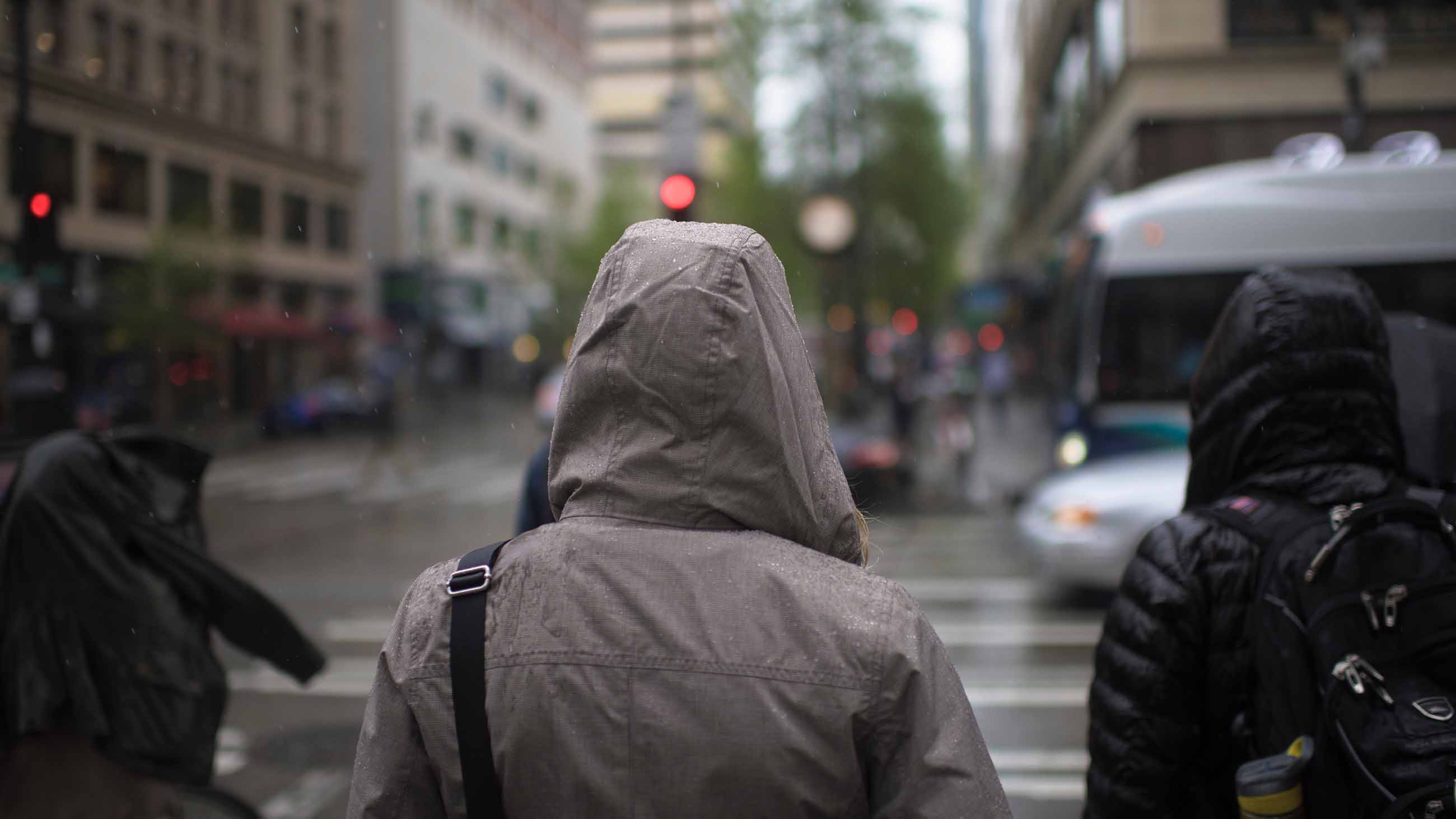Seattle Thinks It Knows Rain. Climate Change Begs to Differ.
By early spring, Seattleites are over the rain. Winter is a very long, very gray tunnel, during which the city sees most of its annual 150 wet days.
This is not surprising for anyone familiar with the Emerald City. What is surprising, though, is that a place synonymous with precipitation may not be prepared for the rain that’s coming.
Thunderstorms and downpours are historically rare in Seattle, which actually receives less annual rainfall than Miami. Most of its precipitation comes in the form of an inescapable drizzle. More of a mist, really. The city’s stormwater infrastructure is built with these steady, low volumes in mind.
However, a recent study found a significant rise in the number of heavy rains in recent decades, and climate models predict an increase in both the frequency and intensity of what officials call extreme weather events: deadly deluges that, within 24 hours, are capable of overwhelming water drainage infrastructure to cause flooding and send raw sewage into nearby waterways.
“We’ve got challenges including affordability and homelessness, but climate change and extreme weather events are right up there,” said James Rufo-Hill, a meteorologist with Seattle Public Utility who was involved in the study. The city has been collecting rainfall data through a network of rain gauges since the late 1970s. In the past 14 years, he said, “the stats have changed such that the definition of an extreme event has changed.” A storm that was previously expected only once in 100 years is now likely in 25.
One of the worst events on record occurred in early December 2007, when two storms flooded the Washington and Oregon coasts and brought wind gusts that topped 100 miles per hour. Seattle registered 5.61 inches of rain in only 24 hours. Just a year before, the city’s low-lying neighborhoods had flooded when a storm overwhelmed a drainage system clogged with debris, and claimed the life of a woman trapped in a windowless basement. The region again saw significant rain events in 2010, 2012, and 2014.
Most storms come to the Pacific Northwest by way of the Pineapple Express, a narrow band of atmosphere that draws moisture from warm tropical waters around Hawaii and delivers it northward. These atmospheric rivers are known to be responsible for up to half of the total rainfall of western North America and are the main source of heavy rain throughout Washington state, said University of Washington climatologist Guillaume Mauger.
What’s less understood is how climate change will affect them — although we know that warmer air holds more water, and the Puget Sound region is expected to grow warmer in coming decades. The heaviest 24-hour rain events in western Oregon and Washington are projected to intensify by about 20 percent by the 2080s, and flooding is predicted to worsen, according to a University of Washington climate assessment.
“Cities don’t have the luxury of climate denial and cannot wait for federal leaders to embrace science. The effect of inaction is already at our doorstep,” said Mayor Jenny Durkan in a statement following the release of the rainfall report. A massive stormwater storage project is already underway in one of the city’s most iconic neighborhoods.
Ballard, which sits just northwest of downtown, is representative of the city’s vulnerabilities. It is both low-lying and served by an outdated system that combines sewage and stormwater drainage. Polluted runoff shed by neighboring hills frequently floods this hip, lock-side borough. With pipes too small to manage, the system is forced to offload a mix of rainwater and sewage into nearby Lake Union — a serious public health and environmental hazard.
Using a massive boring machine fresh from digging the city’s latest light-rail expansion tunnel, Seattle Public Utility and King County plan to burrow an underground storage tank three miles long and more than 18 feet in diameter to capture water during heavy rains. Once this $430 million project is operational in 2026, the city estimates it will save more than 60 million gallons of raw sewage and polluted runoff from overflowing annually.
Seattle came together through a patchwork of annexation, and so there is no single citywide solution. Managers are replacing old and small pipes and retrofitting facilities as needed. They’re also installing remote sensors to monitor and control flows in real time during storms. On a smaller scale, businesses and homeowners can receive rebates for installing green infrastructure — think spongy rain gardens and large cisterns — to help slow runoff.
All this is happening in preparation for a storm that Rufo-Hill refers to as Seattle’s Hurricane Harvey: a worst-case-scenario, 1,000-year-event in which an atmospheric river loaded with moisture slides in off the Pacific and stalls above Seattle for a week.
The impacts to the city and especially to its surrounding rivers, which could see 25 inches of rain, would be catastrophic, he said — and “we are very much due.”
Stephen R. Miller is a writer and former editor at Yes! magazine and the Capitol Hill Times.
This article was originally published on CityLab. It was republished as part of Climate Desk, a journalistic collaboration dedicated to exploring the impact — human, environmental, economic, and political — of a changing climate.










